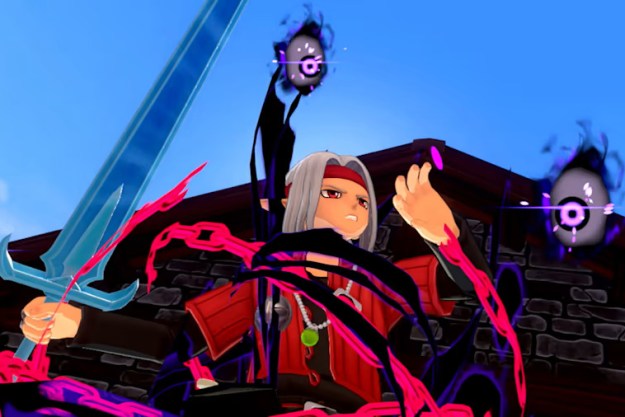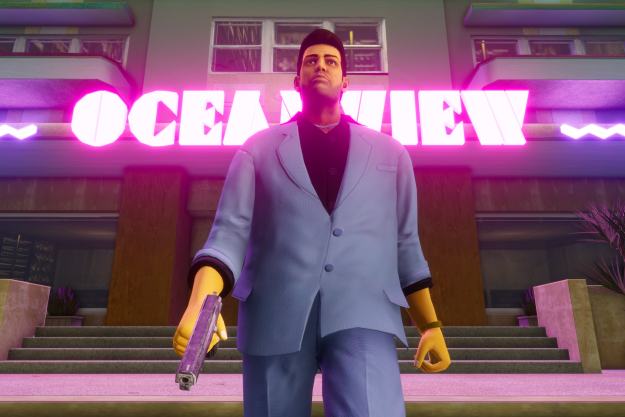
“Dragon Quest Monsters: The Dark Prince is fun enough to give frustrated Pokémon fans a solid alternative.”
- Fun turn-based combat
- Charming monster designs
- Engaging fusion system
- Varied environments
- Performance issues, frame rate drops
- A bit of a grind
- Lack of evolution and innovation
The Dragon Quest series never quite reached the heights of popularity that its Square Enix brethren, Final Fantasy, enjoyed outside of Japan. The same can be said about its spinoff series, Dragon Quest Monsters, which many players consider a competitor to the dominant Pokémon franchise. In fact, the last Dragon Quest Monsters game, 2016’s Joker 3 for the 3DS, never even left Japan. It’s a niche within a niche.
Now, seven years later, Square Enix is finally back with a new entry in the series. Dragon Quest Monsters: The Dark Prince. Like its predecessors, it’s a turn-based monster battler spinoff where players capture the main franchise’s colorful creatures and use them to fight against their own. In an age where the mainline Pokémon RPG series is gaining criticism from frustrated fans, it could be the alternative players are looking for.
While it’s not going to bring more mainstream attention to the spinoff series. like 2018’s excellent Dragon Quest XI did for the mainline franchise, The Dark Prince still delivers enough fun with its engaging monster creation system and enjoyable turn-based battles. It just suffers from rocky presentation and lots of grinding that will likely keep it from fully capitalizing on Pokémon’s moment of weakness.
Brighter times for the Dark Prince
The Dark Prince follows a young human and monster hybrid named Psaro before he became the Manslayer menace that he was in Dragon Quest IV: Chapters of the Chosen. He harbors a hatred for humans due to people mistreating him for his mixed heritage, but his dying human mother’s last wish was for him to be a good person. As a result, he marches onto his father’s front steps and gets demolished.
He then inflicts a curse onto Psaro that renders him unable to hurt other monsters. It’s a clever way for the story to justify its gameplay; Psaro must now tame monsters to make them fight for him and get revenge on his father. The darker revenge-filled tone is juxtaposed with the cartoon art style that the broader Dragon Quest franchise is known for. That gives The Dark Prince a unique voice of its own.

Even though it’s connected to an old game, it works well as a standalone story as players don’t need to have played Dragon Quest IV to understand what’s going on in The Dark Prince. However, longtime Dragon Quest fans and those who have played Dragon Quest IV will enjoy that there’s a connection to a mainstream entry.
A world of monsters
The general gameplay loop for Dark Prince is somewhat similar to that of Pokémon’s. Whereas Pokémon has players defeating strong Gym Leaders and collecting their badges, Psaro runs around various open areas throughout the adventure encountering monsters to recruit or fight. It eventually culminates in a tournament-style boss fight and increases Psaro’s reputation. It might sound basic on paper, but I found the repetition oddly satisfying as I explored the world.
It’s always exciting to come across new monsters that I could add to my roster.
It helps that the open areas have a wide range of environments. The Circle of Caprice is a beautiful, yet contradictory blend of desert, forest, and water, while the Circle of Indulgence is made up entirely of cake. The constant change of scenery helps keep the exploration fresh throughout.
The Nintendo Switch hardware does show its age in exploration; the visuals aren’t really all that better than those in Pokémon Scarlet and Violet. It has similar performance issues to its monster-capturing contemporary too. Load times are long, and there are very noticeable frame rate drops while exploring. Menus take a second or two to pop up when pressing the right button. All of these issues really impede the overall gameplay experience, robbing it of a much-needed level of polish.

Even with those issues, I was still engaged as I discovered new monsters throughout my travels. It’s always exciting to come across new ones that I could add to my roster, especially because of to their art design. The critters are drawn and modeled after Akira Toriyama’s signature style, and the designs are quite varied. They range from cute to uncanny; there’s everything from a bull head on a bird body to a cob of corn with one eye to and a mole with a shovel. These designs strike a cozy middle ground between Pokémon’s family-friendly designs and Persona’s sometimes demonic monsters.
Commanding an army
The Dark Prince has a turn-based battle system like mainline Dragon Quest games. Monsters can either be commanded individually or players can set certain behaviors and let them fight on their own until the next turn. When allowing the AI to control actions like healing or defending, it follows those behaviors quite well. I love having the flexibility of both options in case I have a specific strategy against a boss or I just want to bulldoze my way through a normal encounter.
That system comes with some great quality of life features. There’s a fast-forward toggle to literally speed up battles, and an auto-battle function that lets monsters fight on their own until all the enemies are eliminated. These features help take some of the grind out of battles, something this repetitive RPG needed.
I felt like I needed to grind a few levels to get stronger, which dragged the adventure down.
In order to recruit new creatures, monsters attack with a “show of force” that adds to a total percentage of how likely players are to capture them. The stronger the team is, the higher chance players will have to convince them to join. This system adds some solid suspense to battles, as the percentage blinks like a Pokéball, shaking a few times before it either confirms or denies your capture.
Those systems are capped off by some surprisingly challenging boss encounters. During my first tournament early in the game, I quickly learned that I needed a diverse team with specific roles in order to win. Unlike normal battles, I couldn’t just power my way through with four attackers. I needed to incorporate monsters that buffed my teammates and ones that healed them. Still, at certain points, I felt like I needed to grind a few levels to get stronger, which dragged the adventure down.
Making more monsters
The Dark Prince’s standout gameplay feature is its wildly fun monster synthesis mechanic, which is similar to Persona’s fusion system where players breed monsters to create new ones. Experimenting with different creatures is always exciting, as I’m constantly discovering new monsters, some of which can only be found through fusion. The system incentivizes me to keep creating new monsters too, as Talents can be passed down from the fusion monster material (monsters caught in the wild only contain their natural Talents). It’s a nice midpoint between the simple splicing of Persona and Pokémon’s complex, strategic breeding.
I do wish it wasn’t so creatively safe.
When monsters level up, they occasionally earn Talent Points (TP) that can be spent to increase certain stats or learn new moves. When passing down Talents, the offspring recuperates some Talent Points that were previously invested in it, giving the fresh monster a head start at level one.
I love playing around with the fusion system and trying to find ways I can create some truly powerful and broken monsters that could overpower early game threats. It’s another feature that helped decrease the amount of grinding I did as I realized that simply leveling up my existing party wasn’t the best way to get stronger. I had to work smarter and take a more measured approach when building out my team.

I’m glad to see the Dragon Quest Monsters spinoff series come back with a new entry, although I do wish it wasn’t so creatively safe. It plays too much like previous entries, and the lack of evolution and performance issues are disappointing. Even if it doesn’t rise too far above its predecessors, the gameplay loop and monster fusion system are just as engaging as ever. Dragon Quest Monsters: The Dark Prince won’t be knocking Pokémon off its throne anytime soon, but it’s still a fun alternative for the trainer who’s already caught ’em all.
Dragon Quest Monsters: The Dark Prince was tested on Nintendo Switch.
Editors' Recommendations
- Dragon Quest Treasures shows off monster-catching gameplay
- The best Square Enix games of all time
- The best Dragon Quest games, ranked



